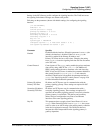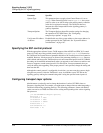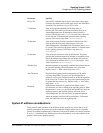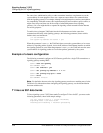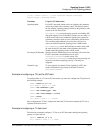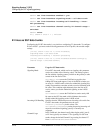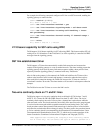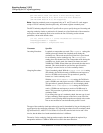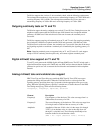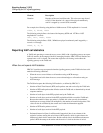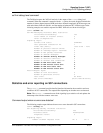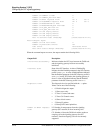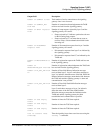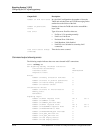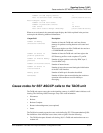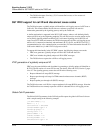
Signaling System 7 (SS7)
Configuring an SS7 signaling gateway
APX 8000/MAX TNT/DSLTNT Physical Interface Configuration Guide Preliminary May 9, 2000 18-13
TAOS also supports the 4-wire-to-2-wire continuity check, with the following requirements:
The exchange that terminates 4 wires must use a transmitting frequency of 1780 ± 20Hz and a
receiving frequency 2010 ± 30Hz. The exchange that terminates the 2 wires must use a
transmitting frequency of 2010 ± 8Hz and a receiving frequency of 1780 ± 30Hz.
Outgoing continuity tests on T1 and T3
TAOS units support incoming continuity tests on both T1 and E1 lines. During these tests, the
telephone switch requests that the TAOS unit put a DS0 channel into a loopback and then
generates a 2010Hz tone. If the switch receives the tone in return, the continuity test is
successful.
TAOS also supports outgoing call continuity tests on T1 and T3 cards. For outgoing continuity,
the switch puts a DS0 into a loopback and the TAOS unit generates a 2010Hz tone. If the
TAOS unit receives the tone in return, the continuity test is successful. Note that all the setup
and signaling required to coordinate a continuity test is handled by the signaling gateway via
SS7.
Note: Outgoing continuity tests are supported only on T1 and T3 cards. E1 cards support
receipt of 4-wire continuity check requests only, and cannot originate continuity tests.
Digital milliwatt tone support on T1 and T3
T1 and T3 cards generate the 1000Hz digital milliwatt (DMW) tone. The SS7 switch sends a
digital milliwatt tone request to the TAOS unit over IPDC and uses the tone that the TAOS unit
generates in special test calls to measure the line distortion and attenuation in the telephone
network.
Analog milliwatt tone and variable tone support
IPDC Tone-Type and Tone-Sting tags enable the IPDC Specify Tone (STN) message to
generate the analog milliwatt tones. When the TAOS unit receives a message from the
signaling gateway specifying these tags, it responds with the appropriate tone type or tone
string. When the signaling gateway specifies a variable tone, it details the tone in the IPDC
Tone-String message tag, which uses the following format:
"frequency1, frequency2, amplitude, duration"
Element Description
Frequency1 First frequency of the dual tone. This value can range from 1 to
3999 and has an accuracy of ± 1Hz.
Frequency2 The second frequency of the dual tone. This value can range from
0 for single tones to 3999 and has an accuracy of ± 1Hz.
Amplitude Amplitude of the tone. If this value is in the range of 4 through
32767, it is an absolute value. A value in the range from -49
through 2 is a decibel level. The following relationship exists
between decibel levels and absolute values:
dBm0 = 20 * log10 (absolute value / 22748.4)



